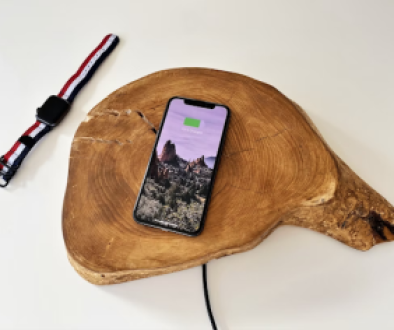The Complete Guide to iPhone Screen Replacement
Overview of the iPhone Screen Replacement Process
The iPhone is one of the most popular smartphones on the market today, but its touchscreen can be prone to damage. Even a minor crack or chip can make it difficult to use the phone properly. Fortunately, replacing an iPhone screen is a relatively straightforward process that can be done in a few easy steps.
You’ll need to purchase a new screen for your device. There are many different types available, so it’s important to make sure that you get the right model for your phone. Once you have the correct replacement screen in hand, turn off your device and remove any cases or covers before starting work on it.
Remove all of the screws from around the edges of your device using either a screwdriver or pry tool depending on what type of screws were used in assembling your phone. Carefully separate each part gently as some components may be attached with adhesive tape and others may require special tools such as tweezers or suction cups for removal without damaging other components within your device.
What is Needed for an iPhone Screen Replacement
If you’ve ever had to replace an iPhone screen, you know it’s not an easy task. Affordable Iphone 11 screen replacement requires specific tools and a good understanding of the device. A successful repair requires attention to detail and patience, so it helps to have a general idea of what needs to be done before attempting the job.
The first step is getting the right tools for the job. You’ll need precision screwdrivers that match your device’s screws, tweezers, and a plastic opening tool or spudger for opening up the device. You’ll also need a heat source like a hair dryer or heat gun; suction cups; LCD adhesive strips; polarizing film strips; glass digitizer assembly replacement kit (which includes new front panel glass); adhesive glue remover solution; cleaning cloths and alcohol wipes; plastic razor blades for scraping off old adhesives from your phone frame; Phillips head screwdriver set with security bits (for certain models); electric drill with tiny drill bit set (for certain models); soldering equipment (for certain models).
Step-by-Step Guide to Replacing an iPhone Screen
Having a cracked iPhone screen can be an incredibly frustrating experience, but luckily, it’s not always necessary to replace the whole phone. Replacing the screen is relatively simple and cost-effective, allowing you to keep your device in working condition and avoid purchasing a new one. Here’s a step-by-step guide on how to replace your iPhone screen.
Step 1: Gather the Necessary Tools
The first thing you will need to do is gather all of the tools required for replacing an iPhone screen. This includes a Phillips screwdriver, tweezers or pliers, iSclack (an opening tool specifically designed for iPhones), suction cup (for removing the display assembly), spudger (for prying open parts of the phone), and replacement kit (including a new display assembly).
Step 2: Power Off Your Device
For safety reasons, it is important that you power off your device before beginning work on it. To do this press and hold both the “Power” and “Home” buttons together until you see the Apple logo appear on screen – then release both buttons simultaneously. Your device should then shut down completely as indicated by a black display showing no signs of life whatsoever.
Common Issues with Replacing an iPhone Screen
Replacing an iPhone screen is a popular repair option for those who have cracked or broken their device. However, it is not without its issues. Whether you are doing the repair yourself or having it done professionally, there are common issues that can arise when replacing an iPhone screen.
The first issue people run into when replacing an iPhone screen is compatibility. Not all parts are compatible with every device, so you must make sure the part you purchase matches your specific model of phone. You also need to be aware of third-party replacement screens and determine if they will work with your device’s software and operating system.
Another common issue when replacing an iPhone screen is damage to other components during the process. The display assembly on iPhones contains several delicate pieces that can easily break if not handled properly during installation. It’s important to be very careful when taking apart and reassembling the phone in order to avoid damaging any other parts such as speakers, cameras, or sensors while performing this repair job.
If you purchase a new LCD display panel for your device, there may be problems with image quality due to incorrect calibration at the factory before shipping out the part or improper installation by whoever replaced the old one with this new one.
Conclusion
In conclusion, replacing a screen on an iPhone is not for the faint of heart. It requires patience, precision, and some technical know-how. If done correctly, it can be a cost-effective way to keep your device in good condition. However, if done incorrectly, it can permanently damage your phone or void the warranty. Therefore, if you are not confident in your ability to complete this task yourself, it is best to consult an Apple-certified repair service that can guarantee a successful replacement of your iPhone’s screen with quality parts and expertise.
Also check : Significant Role of Family Health Care in Promoting Well-Being




